My new ebook, All I Needed to Know I Learned from Columbo is now available on Amazon. It takes a look at 7 great fictional detectives (Sherlock Holmes, Nero Wolfe, Father Brown, Dan Holiday, Boston Blackie, Columbo, and Adrian Monk), examines their careers in books, TV, and radio and then gleans one or more life lessons from their stories.
To provide you an idea of what the book is like, I’m pleased to offer Chapter 1 for your reading pleasure.
Chapter 1
Sherlock Holmes
In 1887, Arthur Conan Doyle introduced Sherlock Holmes in A Study in Scarlet. When we first meet Holmes, he’s a young eccentric who needs a roommate. Dr. John Watson, an injured veteran of Afghanistan, moves in with Holmes and begins to learn what a unique fellow his companion is.
In A Study in Scarlet, Holmes emphasizes his role as a consulting detective. The job, as described by Holmes, involved helping other detectives who have gotten stuck in their efforts to solve a case. This emphasis on being a consultant disappears in later stories as Holmes often has clients of his own.
Holmes took on a wide variety of complex mysteries, told in short stories and novels. He captured the interests of readers, but Doyle became worried Holmes was preventing hom from moving in more serious literary directions, so in 1893, Doyle killed off Holmes in a fight with his newly introduced archenemy, Professor Moriarity.
Doyle only left his audience demanding more. Doyle wanted to cash in by creating a stage version of Holmes. After a long process, he found actor/playwright William Gillette who adapted Holmes to the stage. Gillette added greater definition to the Holmes character in the public mind. The phrase, “Elementary, my dear Watson.” had its genesis in Gillete’s play.
Gillete traveled throughout the world, playing the role of Holmes on stage for forty years, and later became the first actor to play Holmes on the radio. These efforts increased the public demand for more Sherlock Holmes stories. Doyle tried to respond to this demand in ways that wouldn’t commit him to further projects. He released Hound of the Baskervilles as a novel that was set before Holmes’ death. Doyle finally relented and brought Holmes back from the dead for The Return of Sherlock Holmes. That collection of short stories ended with Watson stating Holmes had forbidden him from writing down any additional stories.
Public demand persisted and two more short story collections and another novel followed before the last Arthur Conan Doyle Sherlock Holmes story appeared. Even after Doyle died, the public demand for Holmes didn’t. Hundreds of film, television, and radio adaptations have been made since.
The most famous movie adaptation paired Basil Rathbone and Nigel Bruce as Holmes and Watson. This partnership endured for fourteen films and more than two hundred half-hour radio shows from 1939-46. For years, this performance stood as the standard. Now many Holmes fans prefer the British Television episodes of Sherlock Holmes with Jeremy Brett for their fealty to Doyle’s stories, rather than the improvisations most of the Rathbone-Bruce films made in moving Sherlock Holmes to the 1940s.
Rathbone and Jeremy Brett of the ITV series have the most supporters for all-time best Holmes. However, new entrants continue to appear. In late 2009, Robert Downey, Jr. played Holmes on the silver screen while 2010 marked the launch of a new BBC program imagining Holmes living in modern times called simply, Sherlock.
Hundreds of pastiches have been written outside the Holmes canon of the fixty-six stories and four novels. Nearly 125 years after a Study in Scarlet appeared, public worldwide interest in the character of Sherlock Holmes remains unabated. People are curious about every facet of his life. He provokes more “what if” questions than any character in literature. He is the definitive fictional detective.
Life Lesson: The Man Who Knew Just Enough
But is Sherlock Holmes Smarter than a Fifth Grader?
A modern Holmes could do many things. However, based on A Study in Scarlet, he’d do well to stay away from quiz shows.
In A Study in Scarlet, Dr. Watson begins the process of trying to get to know his new roommate. He’s quickly impressed by Holmes’ knowledge in many areas, but Watson finds himself astonished and almost scandalized by Holmes’ lack of knowledge in other key areas outside of his professional interest:
His ignorance was as remarkable as his knowledge. Of contemporary literature, philosophy and politics he appeared to know next to nothing. Upon my quoting Thomas Carlyle, he inquired in the naivest way who he might be and what he had done. My surprise reached a climax, however, when I found incidentally that he was ignorant of the Copernican Theory and of the composition of the Solar System. That any civilized human being in this nineteenth century should not be aware that the earth travelled round the sun appeared to be to me such an extraordinary fact that I could hardly realize it.
“You appear to be astonished,” he said, smiling at my expression of surprise. “Now that I do know it I shall do my best to forget it.”
“To forget it!”
“You see,” he explained, “I consider that a man’s brain originally is like a little empty attic, and you have to stock it with such furniture as you choose. A fool takes in all the lumber of every sort that he comes across, so that the knowledge which might be useful to him gets crowded out, or at best is jumbled up with a lot of other things so that he has a difficulty in laying his hands upon it. Now the skilful workman is very careful indeed as to what he takes into his brain-attic. He will have nothing but the tools which may help him in doing his work, but of these he has a large assortment, and all in the most perfect order. It is a mistake to think that that little room has elastic walls and can distend to any extent. Depend upon it there comes a time when for every addition of knowledge you forget something that you knew before. It is of the highest importance, therefore, not to have useless facts elbowing out the useful ones.”
“But the Solar System!” I protested.
“What the deuce is it to me?” he interrupted impatiently; “you say that we go round the sun. If we went round the moon it would not make a pennyworth of difference to me or to my work.”
With a lack of general knowledge skills, Holmes wouldn’t make it far on Are You Smarter than a Fifth Grader? However, Holmes offers sound advice for those who aren’t planning on making their careers as quiz show contestants.
Some of what happened to Holmes’ knowledge is natural phenomena. We do tend to forget things that we learned in school when it has little relevance in our lives. Many parents have felt a sense of embarrassment at being unable to help their junior high students with their math homework. However, the difference is the practice of remembering and forgetting is usually an involuntary process.
What Holmes followed is a process of being mindful and choosing what information will be allowed to take up room in his brain. This is a key lesson in the information age. We have access to endless streams of interesting information. However, we can become so overwhelmed it comes to mean nothing.
Holmes’ focus of only retaining career-related information is not necessarily healthy. Holmes was a workaholic while most of us seek to balance work with a family life and leisure pursuits. However, Holmes does set an example as to how we ought to arrange our brain-attics as letting the brain arrange itself has unpleasant results. Multiple surveys have shown Americans often have better knowledge of pop culture than they do personal finance, world affairs, and even their own religions. Ignorance of important matters is not because people have chosen to be ignorant, but because they’ve not made a mindful effort to choose what information they want to learn.
While it may sound easy to forget useless and unwanted information, it’s actually quite a challenge. It is far easier to start with acquiring new information.
The first key is to find out what’s important to you. What information would you like to know or become an expert on? Would you like to understand a culture, a science? What skills can you acquire that would make your life better or more productive?
The second key is set out to learn about a topic you care about. This doesn’t require a classroom. Many experts are self-taught. Be sure to begin with resources that speak to your current level of knowledge. In addition to reading books and listening to CDs, search for podcasts and blogs that relate to your topic and follow them, so you continually get new information relevant to where your interests lie.
Part of your inventory may be taking a look at information that clutters your brain, but attracts your attention. After the 2009 season of America’s Got Talent ended, I resolved never to watch another season. It cluttered up my brain and took my time for something that wasn’t really fulfilling and enjoyable once it was all said and done. What activities or television shows lead to brain clutter will depend a lot on your own personality.
Beyond skills and knowledge, our brain can become cluttered and confused in our experiences. Many of us easily recall negative experiences. When taking a customer service course a few years back, my class was asked to recall a positive customer service experience and then a negative one. Most described the positive experience in only 30-45 seconds, but could take five minutes describing every detail of the ordeals they’d gone through six or seven years before. We retain and remember the negative experiences of life and the positive gets pushed away, and hence can be harder to remember.
One way to prevent this is by writing down the blessings and good things as they happen to you in your life. Recording it on paper will help you to remember and reading it can help you clean out the mental junk when it begins to accumulate.
Keep Being Mindful
Throughout his career, Holmes displayed knowledge of some topics beyond the bare-bones sketch given by Dr. Watson. This doesn’t negate Holmes points to Watson on their first meeting. Holmes continued to learn throughout his life. Life can lead us to find that we need new pieces of information that we had no idea we would need when we started out. However, Holmes’ decision to get new information came through a mindful process. Holmes didn’t just let information happen to him and neither should we.
If you want to read more, All I Needed to Know I Learned From Columbo is available for the Kindle for only $1.99 through Amazon.com as well as through Amazon’s U.K. Kindle Stores for the U.K, France, Germany, Italy, and Spain. and we’ll shortly be made available in other ebook formats.
If you enjoyed this post, you can have new posts about Detective stories and the golden age of radio and television delivered automatically to your Kindle.
This post contains affiliate links, which means that items purchased from these links may result in a commission being paid to the author of this post at no extra cost to the purchaser

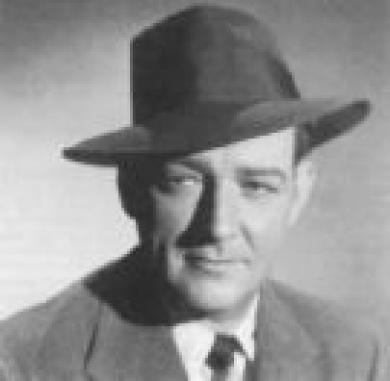
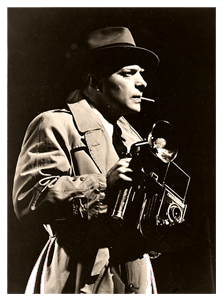 One of radio’s most enduring shows, Casey has a rich history that dates back to the pulps, which is reflected in the show’s titles.
One of radio’s most enduring shows, Casey has a rich history that dates back to the pulps, which is reflected in the show’s titles.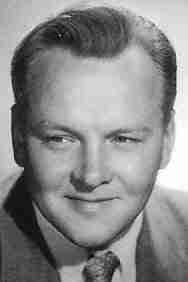 In the Summer, the series was produced from Los Angeles by Elliot Lewis with Danny Clover played Larry Thor, who was better known as an announcer for programs like Rocky Jordan than as an actor in his own right.
In the Summer, the series was produced from Los Angeles by Elliot Lewis with Danny Clover played Larry Thor, who was better known as an announcer for programs like Rocky Jordan than as an actor in his own right.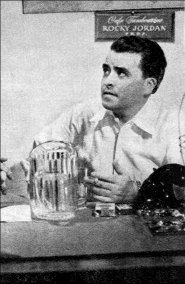 Rocky Jordan is a radio series that evokes memories of the Humphrey Bogart classic, Casablanca. Rocky Jordan, after all was an American expatriate living in the Middle East, running a cafe, and encountering adventure and mystery along the way.
Rocky Jordan is a radio series that evokes memories of the Humphrey Bogart classic, Casablanca. Rocky Jordan, after all was an American expatriate living in the Middle East, running a cafe, and encountering adventure and mystery along the way.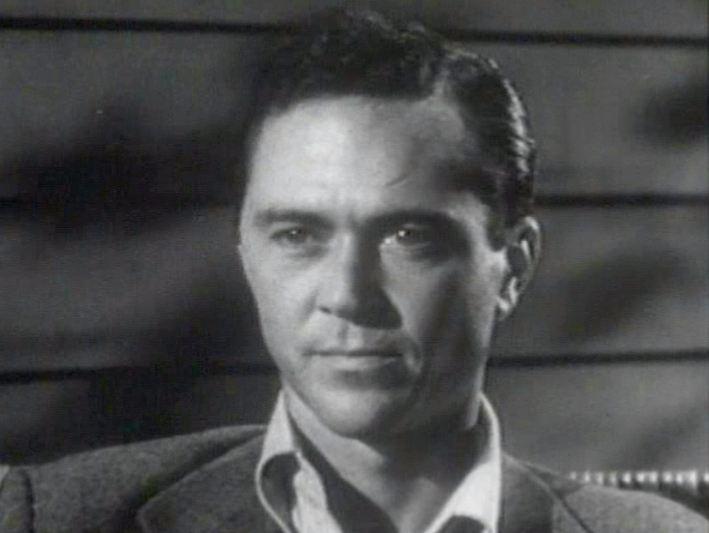 Yours Truly Johnny Dollar was one of the most flexible detective shows in radio’s golden era as it followed a freelance insurance investigator as he travelled across the country and around the world investigating a wide variety of insurance cases including life, fire, and theft claims. In a way, the show resembled the syndicated program, The Adventures of Frank Race which featured an international troubleshooter and insurance investigator and began production around the time of the first Dollar series.
Yours Truly Johnny Dollar was one of the most flexible detective shows in radio’s golden era as it followed a freelance insurance investigator as he travelled across the country and around the world investigating a wide variety of insurance cases including life, fire, and theft claims. In a way, the show resembled the syndicated program, The Adventures of Frank Race which featured an international troubleshooter and insurance investigator and began production around the time of the first Dollar series. In early seasons, the show struggled to survive. It disappeared from the schedule for most of 1952 and the show was absent for the entire 1954-55 season and appeared to be cancelled for good after a respectable run.
In early seasons, the show struggled to survive. It disappeared from the schedule for most of 1952 and the show was absent for the entire 1954-55 season and appeared to be cancelled for good after a respectable run.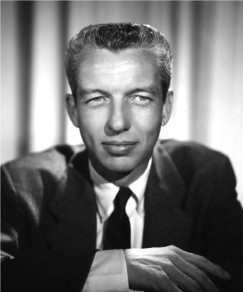 Bob Bailey’s Dollar was a multi-faceted character. He was capable of being touch, hard-nosed with suspects, and cynical. On the other hand, he often showed kindness and compassion, as well as a great sense of justice. He usually made friends with the local police and worked alongside them.
Bob Bailey’s Dollar was a multi-faceted character. He was capable of being touch, hard-nosed with suspects, and cynical. On the other hand, he often showed kindness and compassion, as well as a great sense of justice. He usually made friends with the local police and worked alongside them.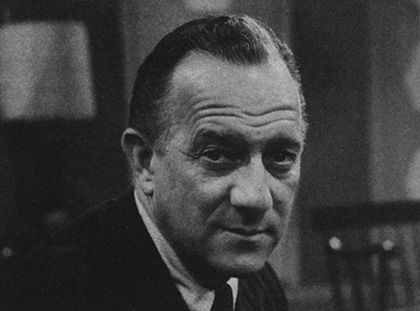 The show did continue to be entertaining, but the writing suffered in its later years as they couldn’t afford to pay writers as much as television. In addition, CBS, to keep the show profitable, began acquiring multiple sponsors, and running up to four different commercial breaks in a single program, leaving less than 20 minutes for the plot.
The show did continue to be entertaining, but the writing suffered in its later years as they couldn’t afford to pay writers as much as television. In addition, CBS, to keep the show profitable, began acquiring multiple sponsors, and running up to four different commercial breaks in a single program, leaving less than 20 minutes for the plot.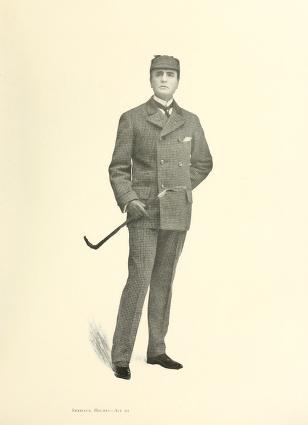
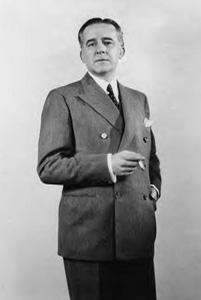
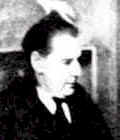
 Orson Welles (1915-85) I’m not even going to attempt to write a fitting biography to Orson Welles in this space. Welles was a pioneering star of radio and film, beginning with his role of the Shadow at age 22. His numerous credits include “The Mercury Theater on the Air” and its famous “War of the World” special. He also hosted “The Black Museum” and starred in “The Lives of Harry Lime” which was based on the infamous character from the movie, “The Third Man” for Towers of London Productions, which was a worldwide syndicator of radio drama. Welles played Holmes in a Mercury Theater adaptation of a William Gillette play. For “Towers of London” he took on the role of Professor Moriarity in The Final Problem. Thus, he joined Louis Hector in having the distinction of playing both Holmes and his arch-nemesis.
Orson Welles (1915-85) I’m not even going to attempt to write a fitting biography to Orson Welles in this space. Welles was a pioneering star of radio and film, beginning with his role of the Shadow at age 22. His numerous credits include “The Mercury Theater on the Air” and its famous “War of the World” special. He also hosted “The Black Museum” and starred in “The Lives of Harry Lime” which was based on the infamous character from the movie, “The Third Man” for Towers of London Productions, which was a worldwide syndicator of radio drama. Welles played Holmes in a Mercury Theater adaptation of a William Gillette play. For “Towers of London” he took on the role of Professor Moriarity in The Final Problem. Thus, he joined Louis Hector in having the distinction of playing both Holmes and his arch-nemesis.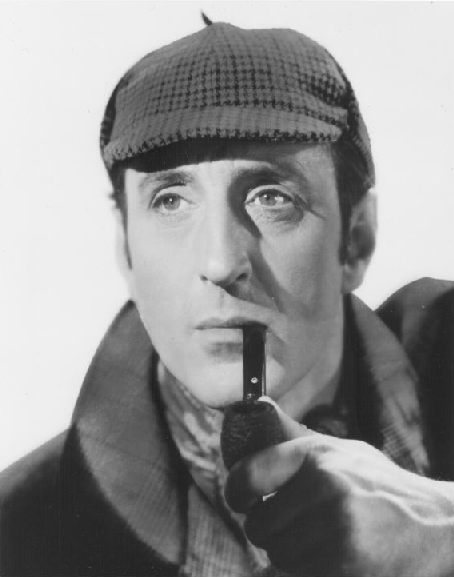 Basil Rathbone (1892-1967): More than 40 years after his death and more than 60 years after he last played Sherlock Holmes, Rathbone is viewed as the definitive Holmes by viewers around the world. However, Rathbone was more than just the movie face of Sherlock Holmes for 14 movies and his voice for more than 200 radio adventures, co-starring with his friend Nigel Bruce.
Basil Rathbone (1892-1967): More than 40 years after his death and more than 60 years after he last played Sherlock Holmes, Rathbone is viewed as the definitive Holmes by viewers around the world. However, Rathbone was more than just the movie face of Sherlock Holmes for 14 movies and his voice for more than 200 radio adventures, co-starring with his friend Nigel Bruce.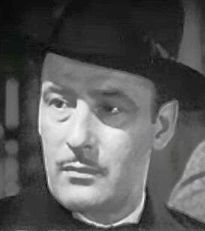 Tom Conway (1904-67): The Russia-born Conway was best known for replacing his brother, George Sanders and taking on the role of the Falcon on screen, as well as starring in two Bulldog Drummond movies. In addition to this, in the 1950s he starrred in the Mark Saber TV series. Conway is well-remembered as the narrator in Peter Pan. He also succeeded Simon Vincent Price in the Saint.
Tom Conway (1904-67): The Russia-born Conway was best known for replacing his brother, George Sanders and taking on the role of the Falcon on screen, as well as starring in two Bulldog Drummond movies. In addition to this, in the 1950s he starrred in the Mark Saber TV series. Conway is well-remembered as the narrator in Peter Pan. He also succeeded Simon Vincent Price in the Saint.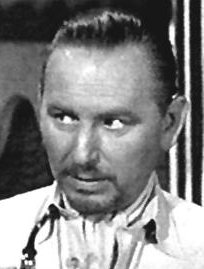 Ben Wright (1915-89) Wright’s career was marked by a couple starring roles. Perhaps, his most noteworthy was starring as Sherlock Holmes in the final season of the New Adventures of Sherlock Holmes. He also took on the role of Scotland Yard Inspector Peter Black in CBS’ Pursuit. However, he was known far better for his character roles. He was an indispensable man, particularly if the role called for a British accent. However, Wright could do quite a few dialects as evidenced by his 2 years playing the Chinese hotel clerk Hey-Boy on Have Gun Will Travel. Beyond recurring roles, he was used frequently on countless dramas. He made his first appearances on Yours Truly Dollar in 1949 and his last appearance eleven years later making him one of radio’s most indispensable people.
Ben Wright (1915-89) Wright’s career was marked by a couple starring roles. Perhaps, his most noteworthy was starring as Sherlock Holmes in the final season of the New Adventures of Sherlock Holmes. He also took on the role of Scotland Yard Inspector Peter Black in CBS’ Pursuit. However, he was known far better for his character roles. He was an indispensable man, particularly if the role called for a British accent. However, Wright could do quite a few dialects as evidenced by his 2 years playing the Chinese hotel clerk Hey-Boy on Have Gun Will Travel. Beyond recurring roles, he was used frequently on countless dramas. He made his first appearances on Yours Truly Dollar in 1949 and his last appearance eleven years later making him one of radio’s most indispensable people.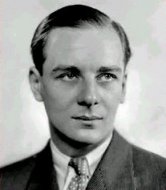 Sir John Gielgud (1904-2000): Gielgud was a famous actor and director known for his Shakespearean performances as well as his association with Sherlock Holmes co-star Ralph Richardson. Gielgud is one of only eleven people to have won an Emmy (1991), a Grammy (1979), an Oscar (1981), and a Tony (1961). His first film appearance was in 1924 and his last was in 2000.
Sir John Gielgud (1904-2000): Gielgud was a famous actor and director known for his Shakespearean performances as well as his association with Sherlock Holmes co-star Ralph Richardson. Gielgud is one of only eleven people to have won an Emmy (1991), a Grammy (1979), an Oscar (1981), and a Tony (1961). His first film appearance was in 1924 and his last was in 2000.